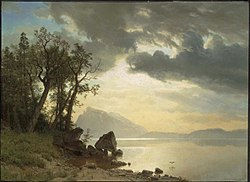Proof is in the Picture
- Cheryl Anne Stapp

- May 25, 2022
- 3 min read

In mid-nineteenth century California, rich men tended to own racehorses, or perhaps sponsor a horse or two owned by someone else; or at the very least, attend the races to place heavy bets and cheer on a favorite. At the track, or over brandy and cigars at home, horse lovers frequently debated a tantalizing theory they called “unsupported transit”— did galloping horses, at some point, lift all four hooves off the ground, in effect becoming airborne? No one knew for sure.
In 1873, the richest man in California (also, arguably, the most horse-crazy man in California) proved the theory; or rather, his photographer did, with the rich man’s money supplying the photographer’s costly equipment. That year Leland Stanford, former governor of California, mega-wealthy railroad baron, and already renowned Yosemite Valley photographer Edward Muybridge, made national headlines with Muybridge’s freeze-action photo of a horse in mid-gallop, with all of its hooves suspended in the air.
The two men had met sometime in 1871, indirectly though the Nahl brothers’ fine art studio in San Francisco, commission sellers of Edward’s free-lance photographs. Judge Edwin Crocker, a regular patron of the Nahls’ gallery, commissioned artist-for-hire Muybridge to photograph Crocker’s newly renovated home in Sacramento, whereupon Leland Stanford, a friend and business associate of Crocker’s, decided that he, too, needed a portfolio made of his own recently renovated and enlarged house in California’s capital city. Muybridge completed both assignments to everyone’s satisfaction, but Stanford’s greater interest was his horses. Soon, the photographer was installed at the race tracks in Sacramento and San Francisco, documenting Leland’s beloved racehorses with camera equipment Stanford paid for.
But not just pictures of the animals: for Leland, this was the chance to prove or disprove the intriguing “unsupported transit” theory he believed in himself, and he was willing to spend a small fortune to settle the question. Possibly, the camera could see what the human eye could not? It did, and the results made headlines in San Francisco’s Alta California on April 7, 1873.
Theirs was an unlikely friendship, though a successful one for awhile, despite the chasm that separated their respective social classes, personalities, and temperaments. Though born a farmer’s son in 1824 in Albany County, New York, Stanford was a college-educated member of California’s moneyed elite—cultured, elegantly dressed, and composed. Muybridge, born Edward (Ted) Muggeridge in 1830, fifteen miles southwest of London to lower-middle-class parents, hadn’t the means to attend England’s universities. Instead, he had spent his youth drifting from one sales career to another, and had already changed some spelling element of his birth name several times before the 1870s. He was considered peculiar, habitually disheveled in dress, with an unruly, chest-length beard sprouting beneath a mass of shaggy white hair.
For most of his time in America, Edward Muybridge was a famous man. For a few early years, calling himself by the single name “Helios,” he was famous for his spectacular landscape photographs of Yosemite. Later, using his own name, he was famous as the photographer who captured the image of a running horse with all four hooves suspended above the ground; and seven years after that, famous as the inventor of the “zoopraxiscope,” a device that turned photo stills into moving pictures projected on a screen. Above all—from 1874 forward—Edward Muybridge was infamous in America as the acquitted murderer of his wife’s lover.
Muybridge exhibited his zoopraxiscope, showing Stanford’s horses in apparent motion, for the first time in Stanford’s San Francisco mansion in 1880. Eventually, perhaps inevitably, when that working friendship cooled, the inventor went on to other projects. These included photographic assignments in Alaska and South American countries, a two-year stint engaged in “motion studies” at the University of Pennsylvania, (where he created a large number of scenes of nudes jumping and running, which shocked and dismayed the university’s trustees); and a highly successful tour of Europe in 1889-1891, exhibiting his spinning pictures through the lens of his marvelous machine.
But by 1894, younger men with new ideas and newer technology had rendered Edward’s inventions and techniques obsolete. In 1895 he moved back to England, where he lived a quiet life and died in 1904. Nevertheless, as biographer Edward Ball asserts in The Inventor and the Tycoon, eccentric Edward Muybridge, with his camera and inventions, was doubtless the original source of today’s motion picture industry.




Comments